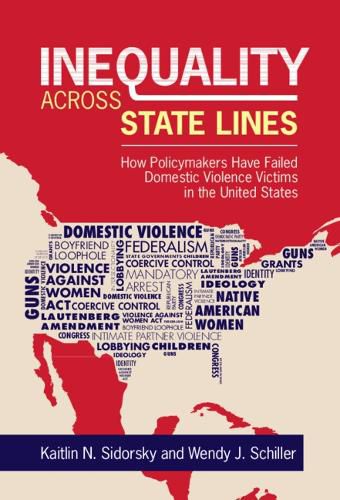Readings Newsletter
Become a Readings Member to make your shopping experience even easier.
Sign in or sign up for free!
You’re not far away from qualifying for FREE standard shipping within Australia
You’ve qualified for FREE standard shipping within Australia
The cart is loading…






In the United States, one in four women will be victims of domestic violence each year. Despite the passage of federal legislation on violence against women beginning in 1994, differences persist across states in how domestic violence is addressed. Inequality Across State Lines illuminates the epidemic of domestic violence in the U.S. through the lens of politics, policy adoption, and policy implementation. Combining narrative case studies, surveys, and data analysis, the book discusses the specific factors that explain why U.S. domestic violence politics and policies have failed to keep women safe at all income levels, and across racial and ethnic lines. The book argues that the issue of domestic violence, and how government responds to it, raises fundamental questions of justice; gender and racial equality; and the limited efficacy of a state-by-state and even town-by-town response. This book goes beyond revealing the vast differences in how states respond to domestic violence, by offering pathways to reform.
$9.00 standard shipping within Australia
FREE standard shipping within Australia for orders over $100.00
Express & International shipping calculated at checkout
In the United States, one in four women will be victims of domestic violence each year. Despite the passage of federal legislation on violence against women beginning in 1994, differences persist across states in how domestic violence is addressed. Inequality Across State Lines illuminates the epidemic of domestic violence in the U.S. through the lens of politics, policy adoption, and policy implementation. Combining narrative case studies, surveys, and data analysis, the book discusses the specific factors that explain why U.S. domestic violence politics and policies have failed to keep women safe at all income levels, and across racial and ethnic lines. The book argues that the issue of domestic violence, and how government responds to it, raises fundamental questions of justice; gender and racial equality; and the limited efficacy of a state-by-state and even town-by-town response. This book goes beyond revealing the vast differences in how states respond to domestic violence, by offering pathways to reform.